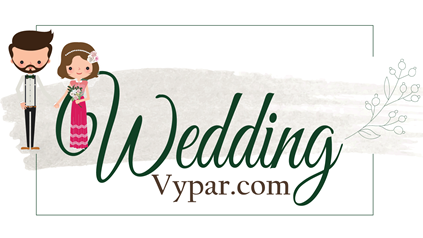Iyengar Wedding Rituals
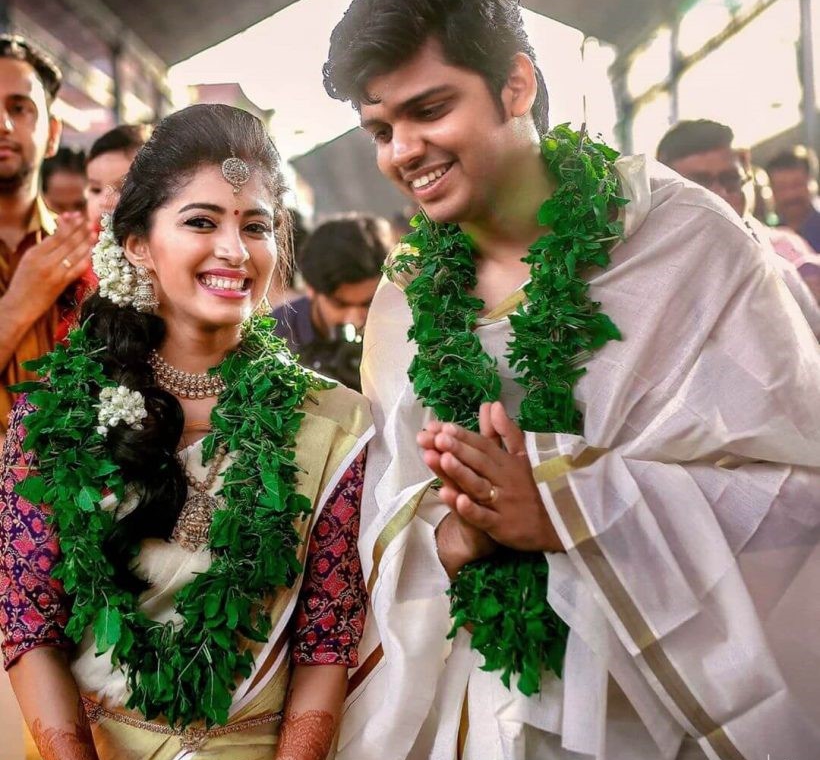
Indian Iyengar Wedding Rituals are a divine amalgamation of culture, age-old beliefs, and faith. They carry the essence of science, unparalleled supremacy of love, and richness of ethos. The unmatched experience of an Indian wedding evokes numerous emotions and is a rare occurrence.
What makes an Indian wedding special is that it is more than just a unison of a couple, it is an emotion, it is vibrance that you feel, it is colours, it is madness, it is fun, and most importantly it is heavenly.
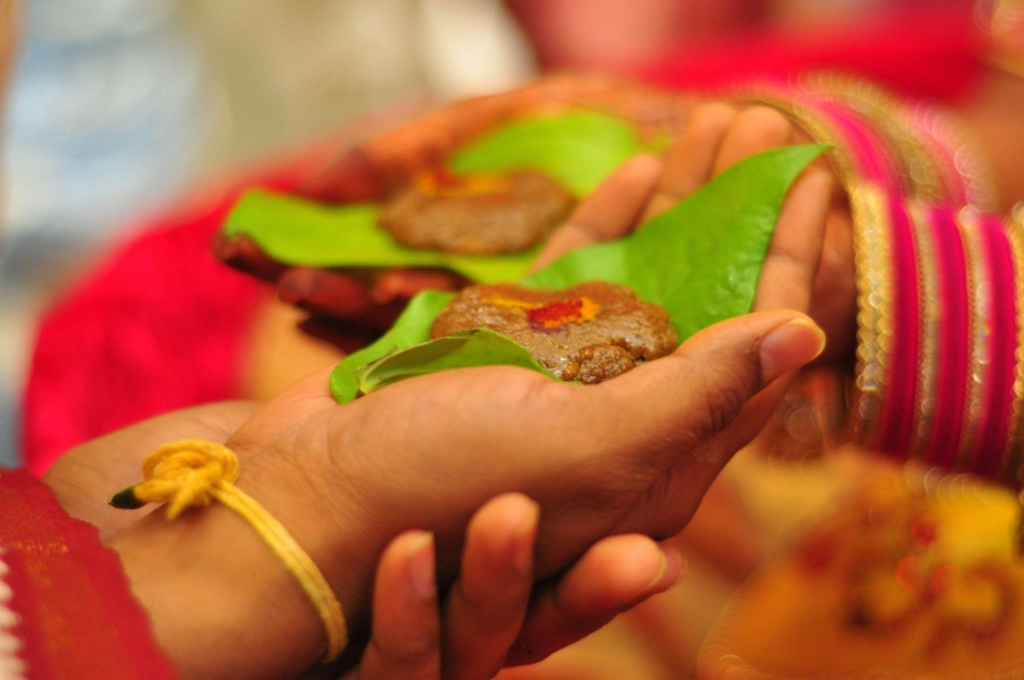
There are over 705 ethnic groups currently residing in the Indian sub-continent celebrating their uniqueness and cultural fabric in their own fashion. The Iyengar weddings yet steal the show with their unadulterated rituals, radiant celebrations and elaborative heritage.
Check this also Kashmiri Rituals Hindu Pandit Weddings
History and background of Iyengars & their wedding rituals
The Iyengar community is one of the oldest and most prominent communities residing majorly in the Southern part of India, like destination weddings in Karnatka, this clan existed since 900 CE showing their deep interest in Hinduism. Iyengar communities are deeply rooted in their culture and each festivity or ceremony is highly pious and is the reflection of their faith towards God and respect for commitment.
Also known as Sri Vaishavas, the community’s interests, values and customs are highly intertwined and influenced by the teachings of Vaishnavism.
The wedding ceremony of the Iyengar community is influenced by Vedic practices and is guided by religious texts and scriptures.
The traditional attire
Traditional attires are the gist of the ceremony, and the traditional Indian ceremony has a lot to do with the “solah shringar” which includes flowers, jewellery, kajal and whatnot. The colour, and royal theme used in the Indian ceremony are the classic example of radiance and joy.
The bride traditionally wears a Kanjivaram silk saree, renowned for the opulence of silk and intricate work of zari at the edges. These zari borders are inspired by nature, stories and even mythological references. The bride is ornamented with gold jewellery: The Kasu mala or the coin necklace; Vanki or the armlet; Oddiyanam or the waist belt, these especially symbolise prosperity, and fertility of the bride.
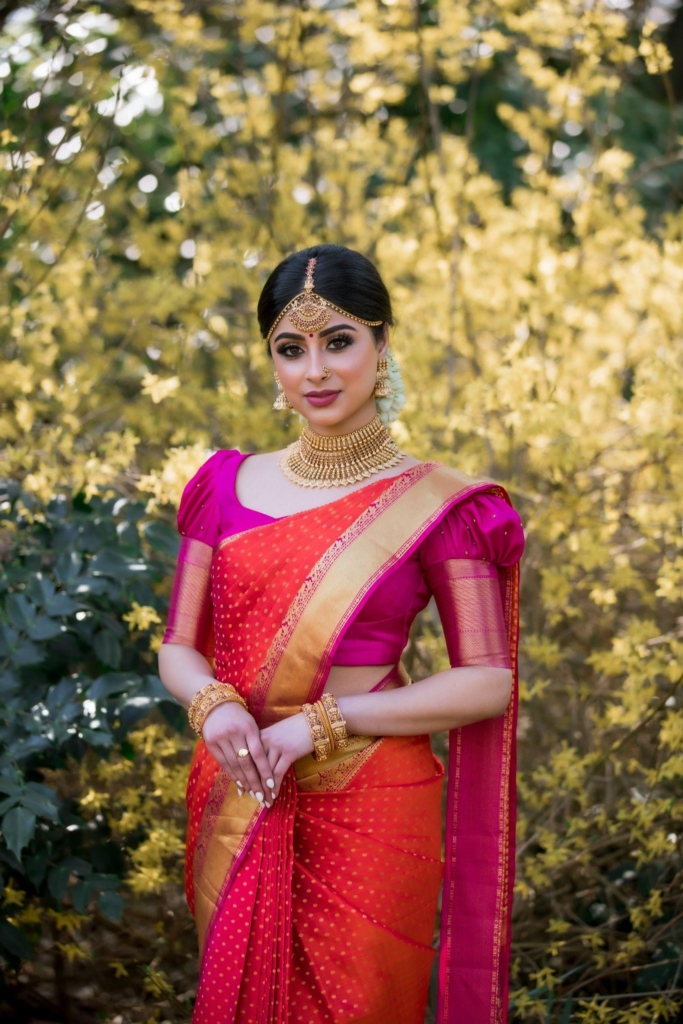
The bride is also adorned with fresh flowers like mogra, rose or jasmine adding the natural fragrance to the complete look.
The groom traditionally wears a traditional dhoti, silk angavastram and kurta. Besides, the groom wears a garland of flowers. The garland represents grace on the path that the groom is going to walk on, that is marriage.
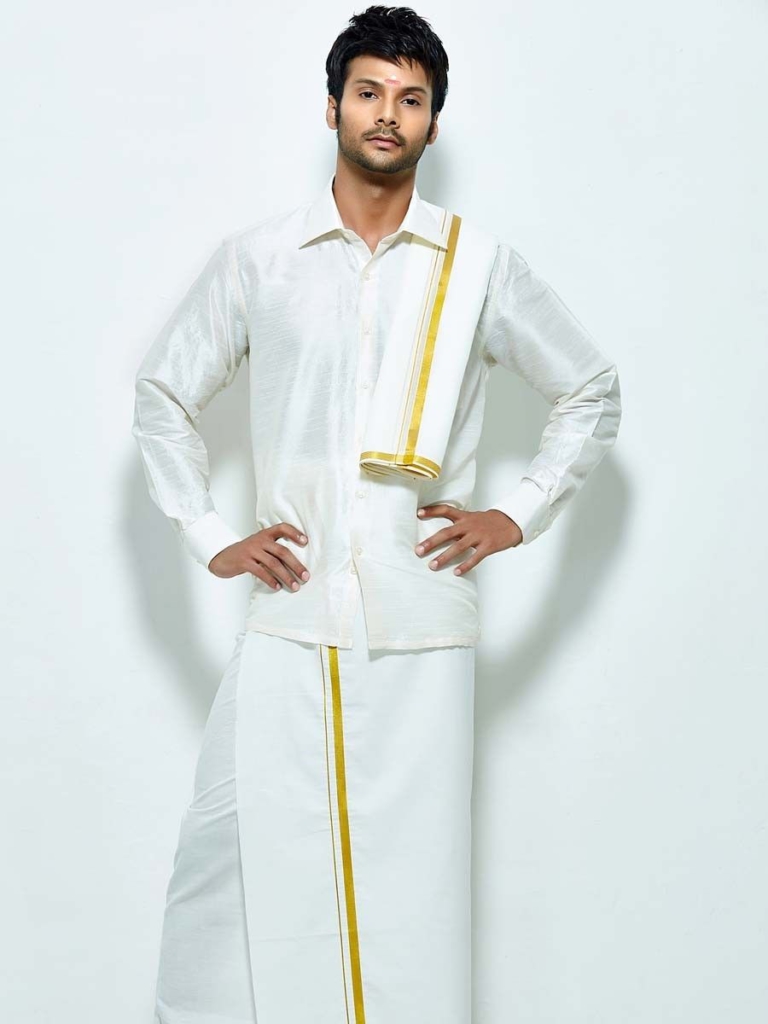
The participants, friends and family too dress up like a festival to celebrate the joy of the couple. They too dress in a traditional attire: silk saree and dhotis evincing the timeless charm of South India.
Check this also Wedding rituals in Bihar
The Traditional Cuisine:
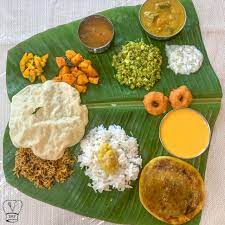
The signature dishes served at an Iyengar wedding are a wholesome delight:
Sambar: This lentil-based delicacy pairs perfectly with the idli, rice or dosa. It accommodates an unmatched blend of the tanginess of tamarind and spice of chillies.
Rasam: Rasam is a flavourful soup known for its mouthwatering taste. It pairs nicely with the rice, or you can have it as a soup or an appetiser based on your liking.
Puliyodharai: Treat to your taste buds, this is a recipe of tamarind and rice that blends meticulously to combine and form a flavour bomb.
Kesari Bath: Kesari bath is a dessert that is made up of semolina, ghee, jaggery or sugar and dry fruits.
Payasam: This traditional delicacy is a part of every home in South India. The creamy texture and sweetness of Payasam have an unparalleled taste. A true delight.
Check this also Bengali Wedding Rituals
The traditional ethos of the Iyengar Wedding Rituals
Thirumana Porutham
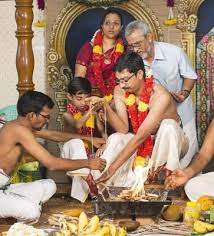
Also known as Kalyana Porutham, it is an essential and highly recognised initiation of the marriage ceremony. Thirumana Porutham refers to the process of match-making by matching the horoscope of the bride and groom to check their compatibility in the forthcoming years.
Thirumana Porutham is further segregated into different aspects such as Jathaka Porutham, Consideration of family and doshas, confirmation and consent and then engagement.
Jathaka Porutham involves the matching of the bride’s and groom’s horoscope based on Dina porutham, that is matching of the stars; Gana porutham, matching of the temperament; Mahendra porutham, matching of the progeny. These cumulatively contribute to Jathaka Porutham. Jathaka Porutham is done by an experienced astrologer.
If during these matching the astrologer comes across certain doshas of inauspicious influences on the marriage then he/she rectifies it by providing a gemstone or chanting mantras. Consulting the elders, and confirming within the bride and groom’s families the couple proceed to engagement and a symbol of acceptance and commitment towards each other.
Check this also Budhist Wedding Rituals
Nichayadhartham
Nichayadhartham embodies the cultural and religious values that Iyengar communities have been upholding since the year of their existence. Nichayadhartham begins with the Ganesh pooja and the writing of the lagan patrika.
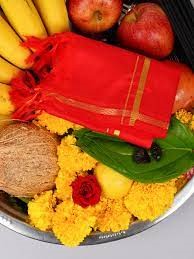
Nichayadhartham is the appreciation of the bride’s family by the groom’s family. It involves the exchange of gifts symbolising mutual respect and gratitude. Groom’s family gifts silk sarees, gold jewelleries, fruits, sweets and other symbolic offerings which represent harmony and joy to both families.
Check this also Nepali Wedding Rituals
Vratham
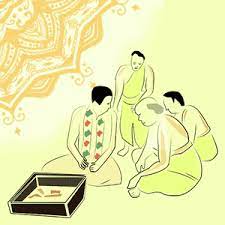
Vratham is a religious observation which involves specific religious vows and practices following the wedding date. These practices include abstaining from specific food items, praying, and meditation. The bride and groom involve themselves in the process of cleaning: physically, mentally and spiritually to start their new journey as a couple together. Practising religion, ritualistic baths and seeking blessings from elders are the prominent parts of this process.
The key component of Vratham is fasting or abstinence from certain food items that may not lead to a harmonious relationship or union. The fasting period usually varies from belief to belief of the families. This practice is solely for a sacred and joyous union of the couple through a pure ritual of marriage.
Check this also Pagan Wedding Rituals
Pandalkal
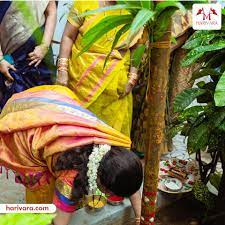
It is welcoming of the groom. This ceremony revolves around the welcoming of the groom at the wedding venue.
This ritual involves performing aarti, applying vermilion and offering garland to the groom. Pandhalkal is the representation of acceptance of a groom by the bride’s family.
The celebrations begin, from here on.
Kasi Yatra
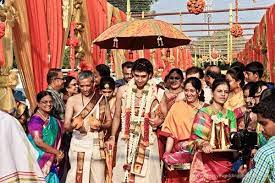
Kasi Yatra is a playful, pretentious ritual. Performed by the groom where he embarks on his journey for Kasi abandoning the pleasures of life, and leading a spiritual path. The groom usually carries a kamandal, an umbrella and a book.
The bride’s family intervene and stops the groom from renouncing “a grihastha” life and asks him to reconsider his decision. After the groom agrees to negotiate, he returns from his Kasi Yatra. This playful event is accompanied by the acknowledgement of the groom for the marital rituals, responsibilities and the importance of family.
Check this also Chinese Wedding Rituals
Oonjal
Also termed as a swing ceremony. Oonjal signifies the ups and downs of life and the togetherness that the couple experience throughout life. It is also a representation of something happy and fun.
Oonjal ceremony involves the kith and kins standing around the couple and the couple starts to swing. The relatives and family members bless the couple by singing traditional songs (Lagna Pattu).
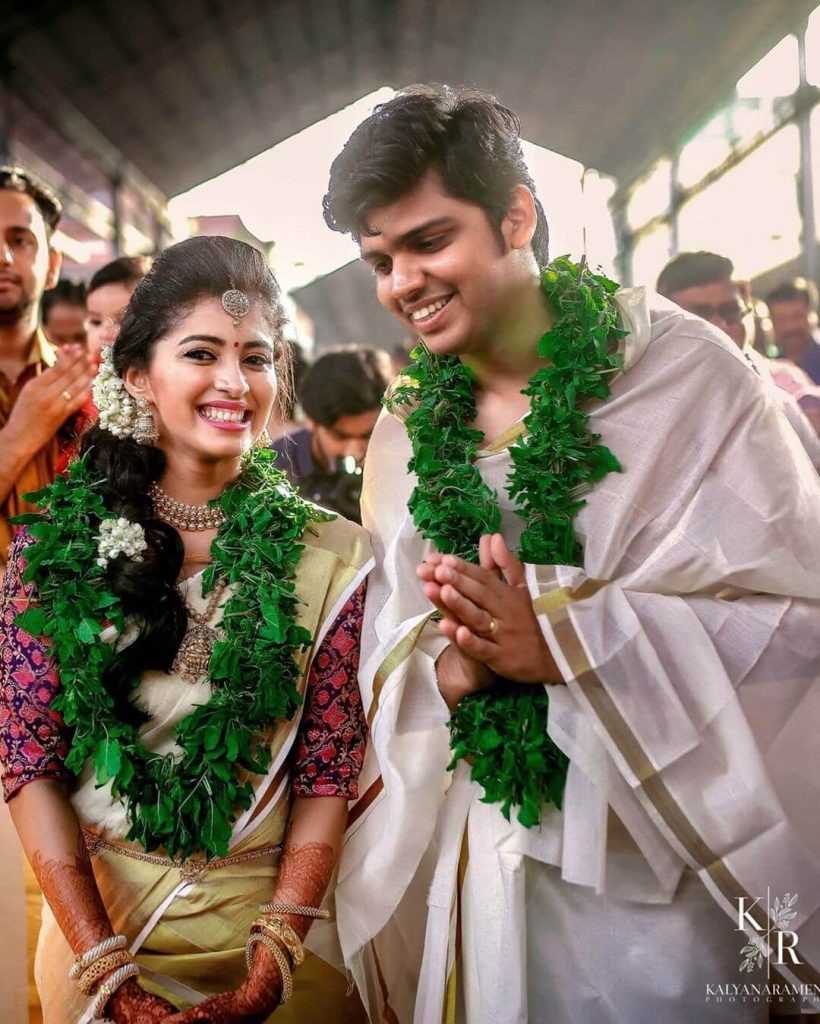
During this ceremony the pair exchange garlands as an epitome of acceptance and allowance of the either ones in their respective lives with respect.
Check this also Mormon Wedding Rituals
Kanyadanam
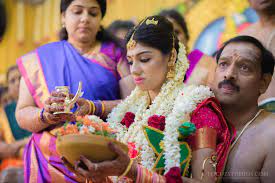
Kanyadanam is a highly significant and emotional roller coaster of wedding ceremonies. It is not a playful affair but a senti-mental ritual where the bride’s parents hand over their beloved daughter to the man they found righteous and best for the child. It is a representation of acceptance and love and passing on the responsibility from parents to her husband.
This special ceremony takes place in presence of the family, relatives and friends where they (the bride and groom) sit parallel to the sacred fire, agni where the bride’s father or an elder person of the family do the ritual.
Kanyadhanam declares that the groom will be the protector, the guide and a loyal companion for the bride for life and beyond. This ceremony evokes emotions and joy at the same time.
Check this also Korean Wedding Rituals
Mangalya Dharanam
Mangalya Dharanam is a peaceful and blissful ceremony where the groom ties the “mangalsutra” on the bride’s neck. Mangalsutra is a symbol of marital acceptance and unison of the couple.
Typically the mangalsutra is made of yellow threads and two gold coins. It is believed that it keeps the relationship and bride away from all the evil and bad influences.
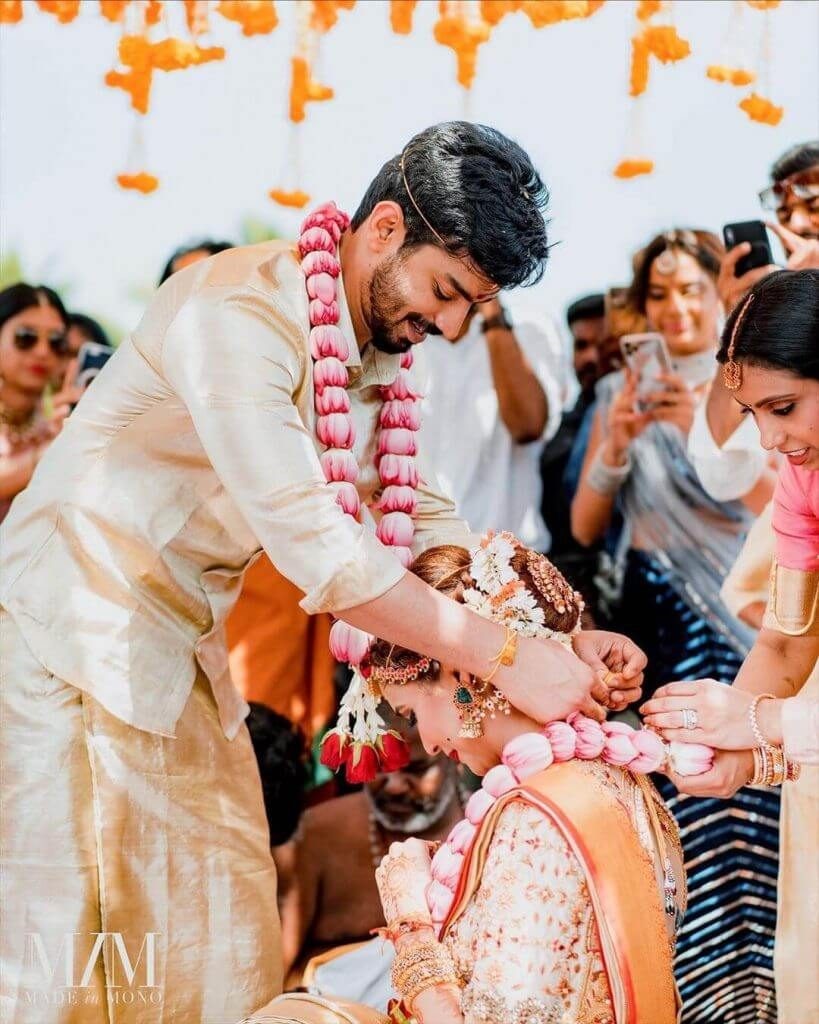
Mangalya Dharanam is a formal acceptance of marriage and thereby can be declared as husband and wife.
Check this also Jewish Wedding Rituals
Saptapadi
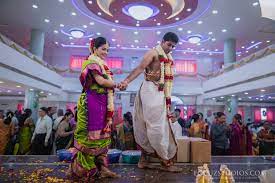
Saptapadi or seven steps is the most dignified ritual in Hindu marriages. This ceremony includes seven vows and promises that the bride and groom promise to each other.
It is believed that each step signifies each promise. Saptapadi is a ritual that encompasses deep love, religious belief, faith and trust for each other. Following these seven vows and promises the couple can happily and harmoniously live their lives together.
Mangala Snanam
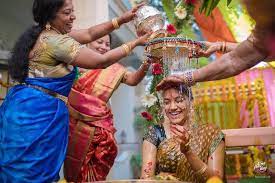
Mangala Snanam is a pious and romantical affair. It involves the newlyweds taking Mangala Snanam together and the ritual that cleanses their body and soul as they start their journey of togetherness.
The water for the snanam is infused with haldi (turmeric) and tulsi (basil) for a reviving experience.
Check this also Kerala Wedding Rituals
Grihapravesham:
Grihapravesham is the ritual where the bride enters the groom’s house after marriage. This ritual is followed by a tilak, aarti, vermilion on the bride’s forehead.
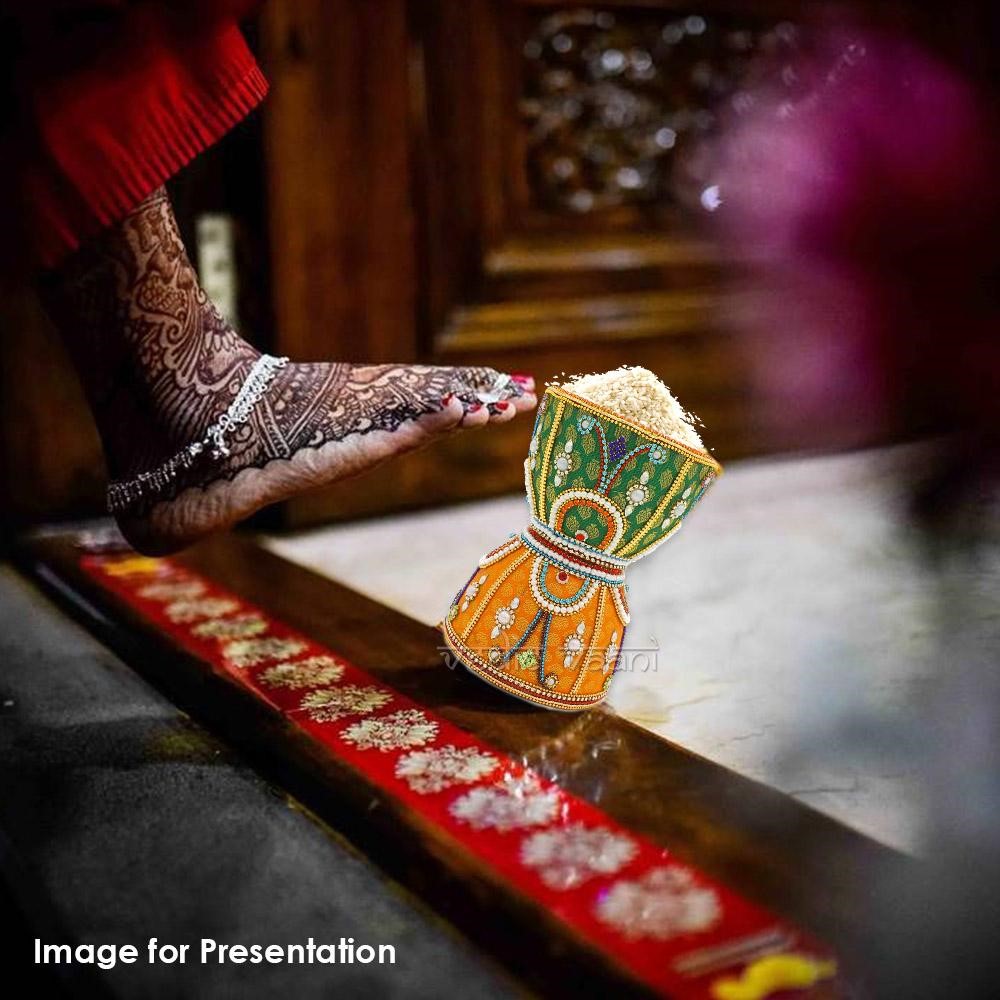
It is a very joyous celebration where the bride is welcomed to the groom’s family with all the love and respect.
Conclusion:
Indian wedding traditions are wholesome, they embark the beginning of a new journey, celebration of love and festivities of age-old beliefs and customs. Iyengar wedding rituals mark their existence of faith and divinity through their historic tapestry of traditions and countless emotions that outshines them.
Each ritual is a melodious mirror image of love, respect and heritage. Marriages are acceptance and celebration. From the Thriumana Porutham to the Gruhapravesam each step shows the devotion of Iyengar communities towards their faith.
Check this also Kannada Wedding Rituals
